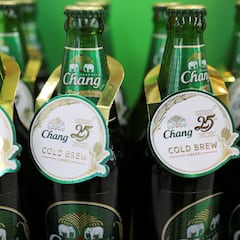The US drinking age is set much higher than many other nations of the world, but the change only came into force in the last 40 years.

Legal Drinking Age Day: Why is the limit 21 years old in the US?

Today marks Legal Drinking Age Day in the United States, a day to reflect on why the legal age to purchase and consume alcohol is set at 21 years old. This has been the federal standard since 1984, when Congress passed the National Minimum Drinking Age Act.
Prior to the 1970s, most states had set the legal drinking age at 21. However, in the wake of the 26th Amendment lowering the voting age to 18, many states reduced their drinking ages to 18, 19 or 20 between 1970-1975.
Studies soon showed this led to an increase in drunk driving crashes and fatalities among youth.
This map shows the legal drinking age in the US in 1983. More interesting than you might first think. Source: https://t.co/gEziFonpLG pic.twitter.com/npSfakakLW
— Simon Kuestenmacher (@simongerman600) April 11, 2024
To address this public health crisis, Congress intervened in 1984. In response to this growing problem, organizations like Mothers Against Drunk Driving (MADD) and Remove Intoxicated Drivers (RID) lobbied the federal government to establish a uniform minimum legal drinking age of 21 across all states. The Reagan administration supported this initiative and used a unique approach to enforce the new law.
Rather than directly mandating the drinking age, the federal government threatened to withhold federal highway funds from any state that did not raise its legal drinking age to 21.
Related stories
By 1987, all 50 states and the District of Columbia had complied.
The results of the drinking ban
Since then, the higher drinking age has proven highly effective at reducing alcohol-related harms. Binge drinking and drunk driving among high school seniors has fallen substantially. A review by the US General Accounting Office found that MLDA 21 reduced youth drinking, drunk driving, and alcohol-related crashes.


Complete your personal details to comment